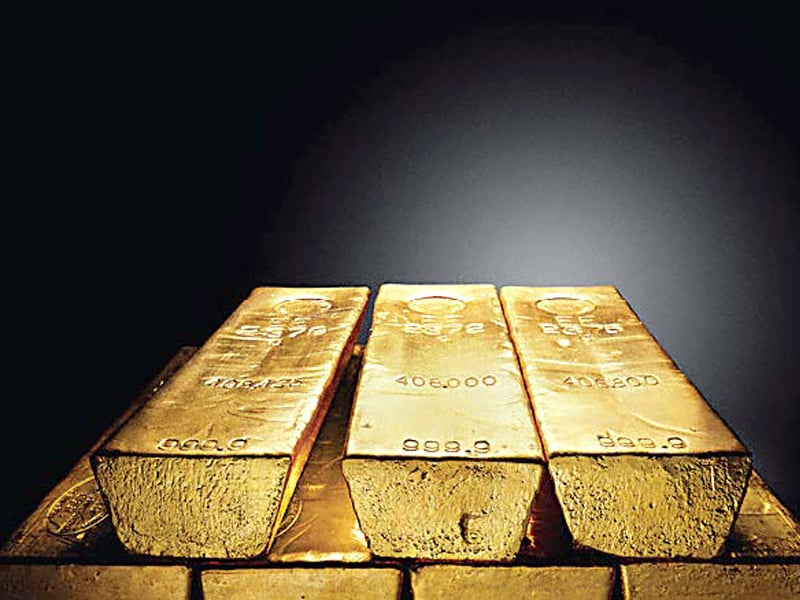
Gold prices in Pakistan continued their downward trend on Monday, reflecting a drop in international markets. The per-tola price of gold in the local market decreased by Rs700, settling at Rs275,000, according to the All-Pakistan Gems and Jewellers Sarafa Association (APGJSA).
This follows a Rs1,200 drop on Saturday, when the per-tola price fell to Rs275,700. Globally, gold prices also declined on Monday, with the international rate recorded at $2,632 per ounce, marking a $7 decrease for the day.
Adnan Agar, Director of Interactive Commodities, highlighted the impact of upcoming US economic data, particularly December's nonfarm payroll report, which will reveal employment figures and unemployment rates. This data, due Friday, is expected to shape market trends.
"Today, we observed significant fluctuations in gold prices. Gold touched a high of $2,650 before retreating to $2,631, indicating market volatility," said Agar. He added that the market is influenced by factors such as tariff-related concerns and potential policies under Donald Trump's leadership, with further shifts anticipated as the report's release approaches. Meanwhile, the rupee saw minor depreciation against the US dollar on Monday, declining by 0.02% in the interbank market. By the close of trading, the rupee stood at 278.62, reflecting a loss of Re0.06 against the dollar.
Over the past week, the rupee experienced a marginal dip, losing Re0.09 or 0.3% in the interbank market. It ended the week at 278.56, down from 278.47 the previous week, according to the State Bank of Pakistan (SBP).
On the global front, the US dollar softened slightly on Monday but remained near a two-year high as traders anticipated upcoming US economic data releases.
Zafar Paracha, Secretary General of the Exchange Companies Association of Pakistan, highlighted the rupee's relative stability, despite end-of-year remittances by banks and multinationals to parent companies abroad. He attributed this stability to low demand in the open market.
Paracha explained that currency exchange companies are selling 90% of their dollars in the interbank market, with only 10% going to the open market. He also noted that the SBP has been purchasing dollars to maintain foreign exchange reserves.
"If the SBP stopped buying dollars, the rupee could appreciate, potentially bringing the exchange rate down to 250 PKR/USD," Paracha said. However, he pointed to exporters' concerns, as a stronger rupee could harm exports.
"Our exporters have a long wishlist," Paracha remarked, describing the central bank's dollar purchases as a hidden incentive in addition to tax breaks and rebates.
He criticised exporters for failing to modernise their operations, stating that instead of reinvesting profits to improve competitiveness, many divert earnings into property investments or keep them idle in banks.

1733707590-0/Jay-Z-(5)1733707590-0-405x300.webp)





1733949940-0/image-(8)1733949940-0-270x192.webp)
















COMMENTS
Comments are moderated and generally will be posted if they are on-topic and not abusive.
For more information, please see our Comments FAQ